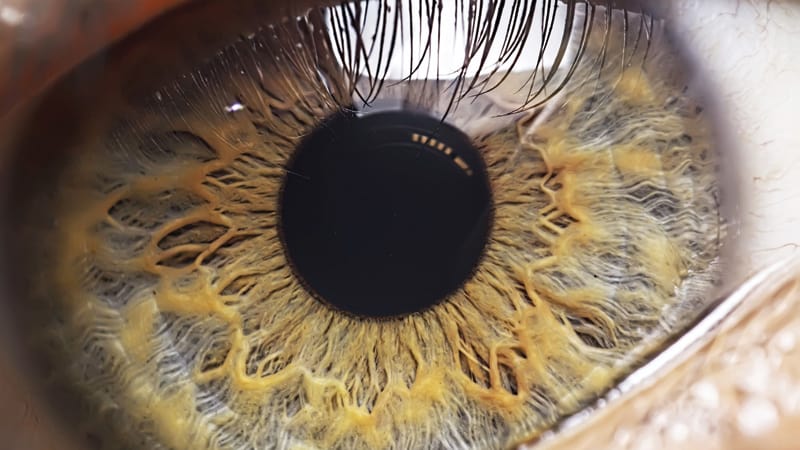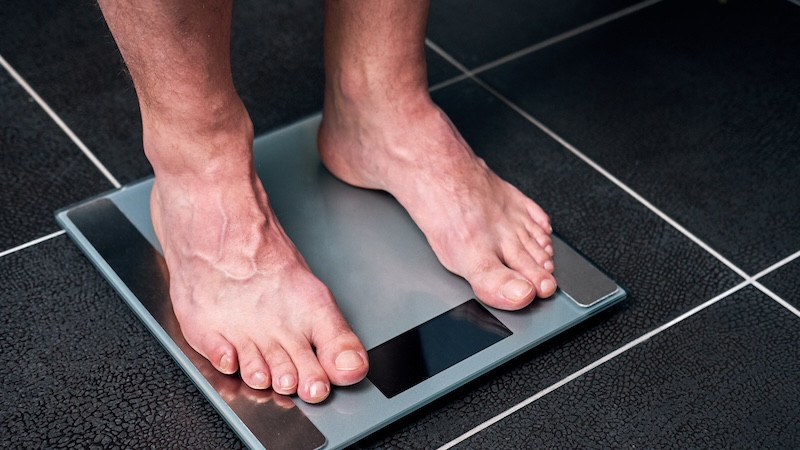Seeing Into the Future
Ensuring the health of your eyes

If holding a book at arms’ length is no longer enough to enable you to read the fine print, it’s not because your arms are getting shorter. This “long arm syndrome” usually starts to appear after the age of 45.
What you are experiencing is a condition called presbyopia. “As we age, it gets more difficult to focus up close. When you’re young, the lens of the eye is very flexible and it’s easy to get your eyes to focus in and out,” says ophthalmologist Dr. Andrew Michael of Commonwealth Eye Care. “Once we get to be over 40 or 45, the lens of the eye is not quite as pliable and it gets hard to focus in and out.”
Protecting your eyesight is crucial at any age, but it becomes even more important after you turn 45. “As we live our lives, our eyes, like the rest of the body, are exposed to different factors that can cause damage or stress on the system,” says Dr. Mark MacMillan, doctor of optometry at Grove Eye Care.
THE EYES HAVE IT
The most common eye conditions doctors see in baby boomers and beyond are cataracts, glaucoma and age-related macular degeneration (AMD).
“Cataracts is the number one condition for folks over 50,” says MacMillan. “It comes from a lifetime of [ultraviolet] exposure and wear on the lens. UV light can lead to the early formation of cataracts and macular degeneration.”
This clouding of the natural lens of the eye causes your vision to blur. Surgery is the best way to correct cataracts. “Typically, this is outpatient surgery done at a surgery center,” Michael says. “The procedure only takes a few minutes, and most people are seeing better the same or next day.
“The best surgery uses ultrasound,” he adds.
Surgery is performed on one eye at a time. The second eye can be done a week or two after the first surgery. “Nothing has to be done until they are having symptoms,” Michael says.
We all get cataracts “if we have enough birthdays,” says MacMillan, “however they can be slowed down by protecting your eyes by wearing sunglasses when you are outdoors.”
With macular degeneration, the central retina deteriorates and is unable to process the images it receives from the outside world. “If you view the eye as a camera, the macula/retina is the film of the camera. If the film is not working properly, we can’t get a good image,” MacMillan says.
Macular degeneration falls into two categories: “A ‘dry’ form that usually moves more slowly and leads to less vision loss and a ‘wet’ kind that moves more rapidly and can quickly lead to significant impairment,” says Dr. David M. Bowman, ophthalmologist and managing partner for Richmond Eye Associates.
There are many treatments for the more severe wet type that have shown the ability to slow or arrest progress of the condition, he adds. “These involve the injection of medications into the eye, which sounds a lot worse than it is for the patient. Most seniors have a friend or family member who is getting these injections, and they will usually attest that the procedure doesn’t bother them much at all.”
There are fewer medical treatments for the dry type of macular degeneration. Patients with dry macular degeneration are frequently put on “certain vitamin combinations, which have been reliably proven to slow the progression of the disease in many patients,” Bowman says. “A patient’s ophthalmologist can discuss with them whether this makes sense for their level of disease and which vitamins are important.”
Macular degeneration is the leading cause of blindness over the age of 65 in the United States. Presently there is no cure for the condition, but there are ways to limit your risk. “Smoking is the biggest controllable risk factor. With that said, avoiding smoking and secondhand smoke is the best form of prevention,” MacMillan says. “Following that, wearing sunglasses when outdoors.”
Glaucoma (damage to the optic nerve) increases in prevalence with aging. There are no symptoms until late in the disease. It is most commonly associated with high eye pressure, but you don’t have to have high eye pressure when you have glaucoma. “You can get advanced glaucoma without ever knowing it,” Michael says. “It’s the sneak thief of sight because it can be silent until late in the process. Then you have vision loss that can’t be recovered.”
People over 40, African-Americans and people with a family history of glaucoma are at higher risk. Eye exams should include checking the pressure in your eye. “A good dilated exam looking at the optic nerve is best,” Michael says.
Once detected, glaucoma is usually treatable with medications. Severe cases may require surgery.
WATCHING YOUR HEALTH
Diabetes can cause problems with your eyes. Up to 10 million people in the U.S. have vision problems from diabetes. “Many people with diabetes have symptoms of blurred or distorted vision,” Michael says. “Anybody with diabetes needs to have a regular dilated eye exam every year.”
Dry eye is a common problem in people over 50. It can cause both discomfort and impaired vision. People with dry eye may notice a scratchy or sandy feeling in the eyes, “what we call a ‘foreign body sensation,’” says Bowman. “Many patients, though, have no significant discomfort but suffer from a decrease in vision that fluctuates throughout the day, especially when reading, watching television or using the computer.”
Mild dry eye can frequently be treated with over-the-counter artificial tears. “However, some patients actually need medications to increase the production of tears or procedures to keep their tears from draining too quickly away,” Bowman says.
It’s also important to protect your eyes when you’re doing outside activities such as yard work. “Lawn mowers, edgers and weed wackers can throw up small rocks and other yard debris that can penetrate the eye and cause serious, sight-threatening damage,” Bowman says. “The important thing is to always wear good wrap-around eye protection when using those devices.”
The best way to prevent many of these common eye conditions is to live a healthy lifestyle: “Eating healthy, not smoking, wearing sunglasses when outdoors and, as always, making that annual visit with your eye doctor,” MacMillan says.
Award-winning writer Joan Tupponce writes about a variety of subjects – from business to celebrity profiles – for publications that include O, The Oprah Magazine, AmericanWay, U.S. Airways magazine and AAA World.


